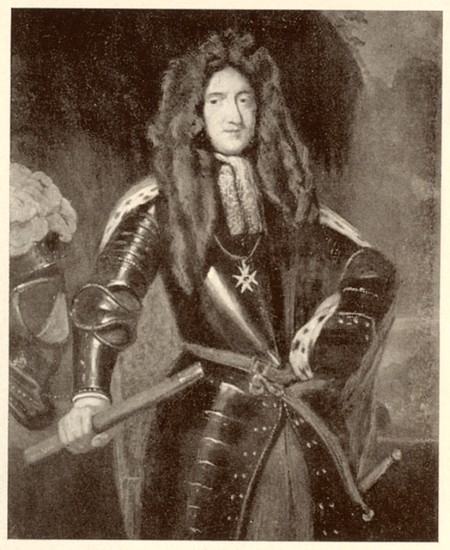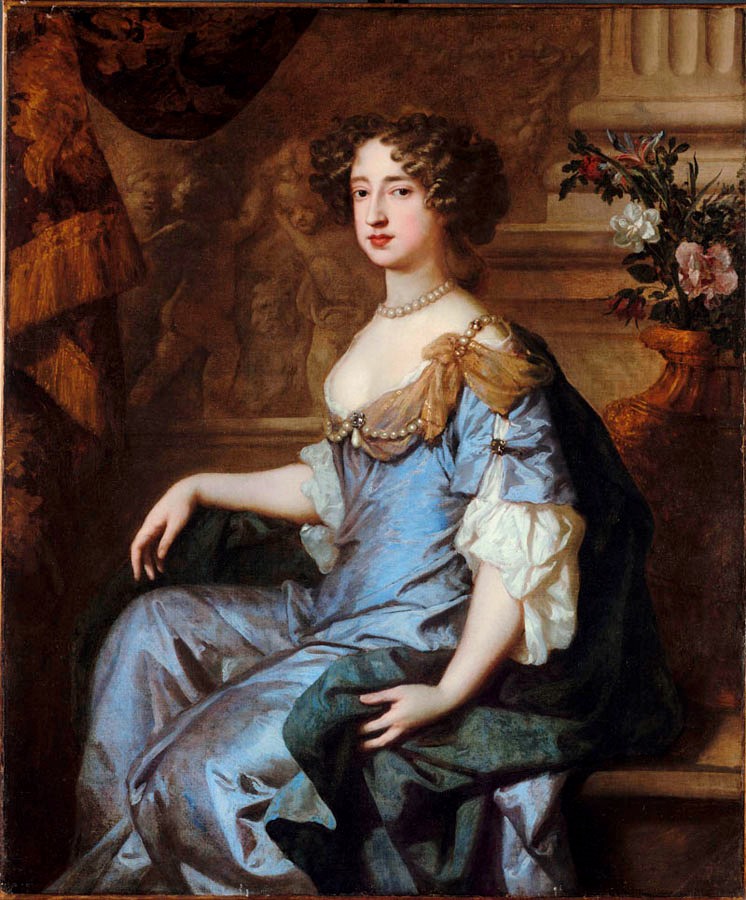War with the French
Finally at the age of twenty-one William
III, Prince of Orange, was invested with the titles that were considered his
heritage by his supporters - Captain General of the Dutch Army for life and
Stadtholder. But William and his tiny army of nine thousand were facing the
might, not of the Spanish, but of the French, whose enormous armies could be
easily supplied from home. William’s ascension to his new position had been
assisted by the tumult caused by the French army’s remorseless march across
Dutch lands. The Dutch responded by blaming those who had led them to date –
Orangist propaganda informed them that the regents were responsible for the
setbacks in the war, by stubbornly refusing to allow William to inherit his
father’s offices. It was popularly felt that if William was made Stadtholder
the English would retire from the fray. Indeed William attempted to do a deal
with his uncle Charles II.
William did nothing to hold back the
Orange pamphleteers, who roused the anger of the crowds against his political
enemies. He refused to publicly clear Johan de Witt & his brother Cornelius
of the crimes of which they were accused. On the 21st June an
attempt was made on the life of Johan, in which he was injured. Johan resigned
his post as Grand Pensionary, replaced by one of William’s supporters Gaspar
Fagel. Cornelius was imprisoned on a charge of treason. On 7th August a letter
from Charles II to William was published, blaming the de Witts & their
supporters for the war; Charles said he was trying to help William gain his
rightful inheritance. Given the letter by William, Fagel had it read in the
States General & the State of Holland, thereby whipping up public animosity
against the de Witt’s party even further.
 |
| Death of the de Witt brothers |
Now William had to concentrate on
removing the French from Dutch soil. In November William led his army in an
attack on the French supply lines at Maastricht. In the meantime an alliance
had been forged with Spain & the Holy Roman Empire, both concerned by the
overweening ambitions of Louis XIV. Louis’ armies took Maastricht, while
William failed to take Charleroi by siege (he was too impetuous a leader &
lacked the patience for a successful siege), but the Dutch fleet under de
Ruyter, defeated the English navy three times during 1673.
The English were brought to the
negotiating table by the strength of anti-French & anti-Catholic public
opinion, fomented by William’s English agents. The Treaty of Westminster was
signed on 19th February 1674 bringing about England’s withdrawal
from the war. By the end of the following year the French had left the Dutch
republic, save for Maastricht. Louis now wished to rationalise his northern
frontier. Containment of the French was to exercise William’s mind for the rest
of life. It was his mission in Europe and he took a dim view of anyone trying
to divert him from his life’s work.
 |
| Count George von Waldeck |
In the early 1670s the Dutch army was
riddled with cowardice, indiscipline & incompetence and William and his
mentor Count George von Waldeck were faced with the challenge of creating a
force able to fight the superior French armies. William’s difficulties as a
general were often compounded by the need to command an composed of allied
nations. The war placed an enormous strain on the Dutch economy & disrupted
trade; with the additional disadvantage that the now neutral English were
profiting from the Dutch problems
In March 1675 William had a fever which
was quickly diagnosed as smallpox. William had no heir. He was the focus of
intense loyalty from the Dutch people and there was no-one else of sufficient
stature for the country to rally round, which could mean disaster for the
nation. The number of people in contact with William was kept to a minimum;
while his friend Bentinck, in accordance with current medical thinking, shared
the bed of his friend, which was believed to draw off the illness from the
patient. By the end of April both William and Bentinck had recovered from the
dread disease.
Many Dutch republicans still feared that
William’s ambition was to create a monarchy. So when he was offered the title
of Duke of Guelderland in 1675 he regretfully had to turn the offer down as the
states of Holland & Zeeland made their opposition clear.
Marriage
In an (ultimately successful) attempt to
bolster his claim to the English throne, William decided to ask for the hand of
Lady Mary Stuart, second in line to the throne; the eldest daughter of the heir
James, Duke of York. William hoped to persuade Charles to secede from his French
alliance and withdraw from the war. It was for this reason that he overcame his
reluctance – the marriage was likely to be unpopular with the Dutch, who had
not cared for William’s mother, another Lady Mary Stuart and William was
contemptuous of the low rank of Anne Hyde, Mary’s mother. Charles II was
persuaded to consider the marriage between his niece and nephew, in an attempt
to quieten the Protestant fears resulting from the 1672 Declaration of Indulgence
and his heir’s Roman Catholicism[i].
With her sister Anne, Mary, who was born
in 1662 (twelve years younger than her future husband) was a declared Child of
the State and their education was the responsibility of the king and his
advisers. Charles guaranteed that they would be brought up as members of the
Church of England, assuring the Protestant succession. Mary’s spiritual mentor
was the Bishop of London – Henry Compton, an outspoken anti-Papist. Lonely and
bored Mary’ emotional output as a teenager was confined to a fourteen year
correspondence with an older acquaintance, Frances Apsley.
In 1673 James, a widower since the death
of Mary & Anne’s mother in 1671, married the fifteen year old Catholic
Princess Mary Beatrice d’Este. The English people and Parliament objected
vociferously to the marriage, but Mary and Anne found a new playmate. By April
1677 the Duchess of York had had two miscarriages, had one daughter die at ten
months old and her daughter Isabella (who was to die in 1681) was a sickly
child. It was also clear that Charles’ marriage was unlikely to produce an
heir, and Charles refused to divorce his barren wife Queen Catherine. The need
to ensure the Protestant succession was becoming imperative. Anti-Catholicism
in England was becoming increasingly stronger.
Charles was inclined to the Dutch marriage
for Mary, as a possible means of detaching his nephew from the Whig opposition
to his government and detaching him from his allies Spain & the Holy Roman
Empire. Charles offered terms to William & in October 1677 William arrived
in England to discuss peace. His reserve alienated the court and Mary was
distressed by the ‘old’ man her relations were planning to marry her to.
William was accompanied by his friend William Bentinck, who was more adept than
William at flattering those whose sense of importance required stroking. James,
whose political sense was never strong, was opposed to the marriage as he hoped
for a Catholic son-in-law – something Parliament would never concede. James’
only support in opposing the marriage came from the French Ambassador.

James reluctantly gave his permission
for the wedding, which was solemnised on 4th November (William’s
birthday) by Bishop Charlton, Mary’s spiritual adviser. The marriage was
enormously popular with the English public, who were hostile to the Anglo-French
alliance and looked forward to an Anglo-Dutch Protestant one. William had
insisted that the marriage take place before peace terms could be discussed, to
avoid his ambitions being taken hostage to his desire for peace. The wedding
was a small private affair, at William’s insistence - he was concerned that a
large ceremony would aggravate his asthma.
The Dutch were not impressed by
William’s choice of bride and the birth of a son to the Duchess of York on the
7th November disappointed William, who was additionally irritated
that he had to stand as Godfather to the child, who now stood between his wife
and the crown. Charles, Duke of Cambridge[ii]
lived only five weeks; he caught smallpox from his half-sister Anne, who’d
visited her stepmother while still convalescent from the disease. William
ordered his wife to stay away from the infected location of St James Palace and
he and Mary quarrelled. William was required in Holland and wanted to return
home.
 On 29th November Mary arrived
in the country that was to be her home for the next eleven years. On the 16th
December William and Mary made their state entry into den Haag, before
returning to the palace of Honselaardijk, where William had taken his bride on
their arrival in the Dutch Republic. In private William’s reserve melted away
and Mary was to learn to appreciate William’s good points and to contrast the
vast difference between the Dutch & English courts.
On 29th November Mary arrived
in the country that was to be her home for the next eleven years. On the 16th
December William and Mary made their state entry into den Haag, before
returning to the palace of Honselaardijk, where William had taken his bride on
their arrival in the Dutch Republic. In private William’s reserve melted away
and Mary was to learn to appreciate William’s good points and to contrast the
vast difference between the Dutch & English courts.
William continued to have business
lunches with colleagues and friends, to which Mary was not invited. He worked
in the afternoons, while Mary received visitors. Mary and William had supper
together in the evening. Mary soon realised that her role was to distract
William from the cares of office with talk of gossip and trivia.
For William and Mary marriage came
first. For them, unusual in a political marriage, love followed – according to
some contemporary sources - relatively quickly after the wedding. In March 1678
William had to return to his campaigning against the French. Mary, already in
love with William, wrote to Frances Apsley of her sadness at seeing William
ride away and her worries that she might never see her husband again. In early
April Mary miscarried, probably after a rough trip to Breda to see William.
Peace treaty with the French was finally
signed at Nijmegen on 10th August; the French pushed to the
negotiating table by William’s advance on Mons, with an army of 45,000. Mary by
now believed she was pregnant again. She was delighted by the visit of her
step-mother and sister, accompanied by the Duchess of Monmouth, in October. The
visitors returned to find England in the grip of anti-Catholic hysteria, caused
by Titus Oates’ revelation of the alleged Popish Plot.
Bibliography
The Later Stuarts
1660-1744 – Sir George Clark, Oxford University Press 1985
Queen Anne – Edward
Gregg, Routledge & Kegan Paul, 1980
William and Mary – John
van der Kiste, Sutton Publishing 2003
William and Mary – John
Miller, Weidenfeld & Nicholson 1974
The Life & Times of
Charles II – Christopher Falkus, George Weidenfeld & Nicholson 1972
www.de.wikipedia.org
More that I didn't know having only ever covered this period very superficially at school and never having actually read much about it. My sole knowledge of Dutch history is from Baroness Orczy's 'the Laughing Cavalier' and 'The First Sir Percy' so this is an excellent introduction for me to the background of how William of Orange subsequently became joint monarch with Mary.
ReplyDelete